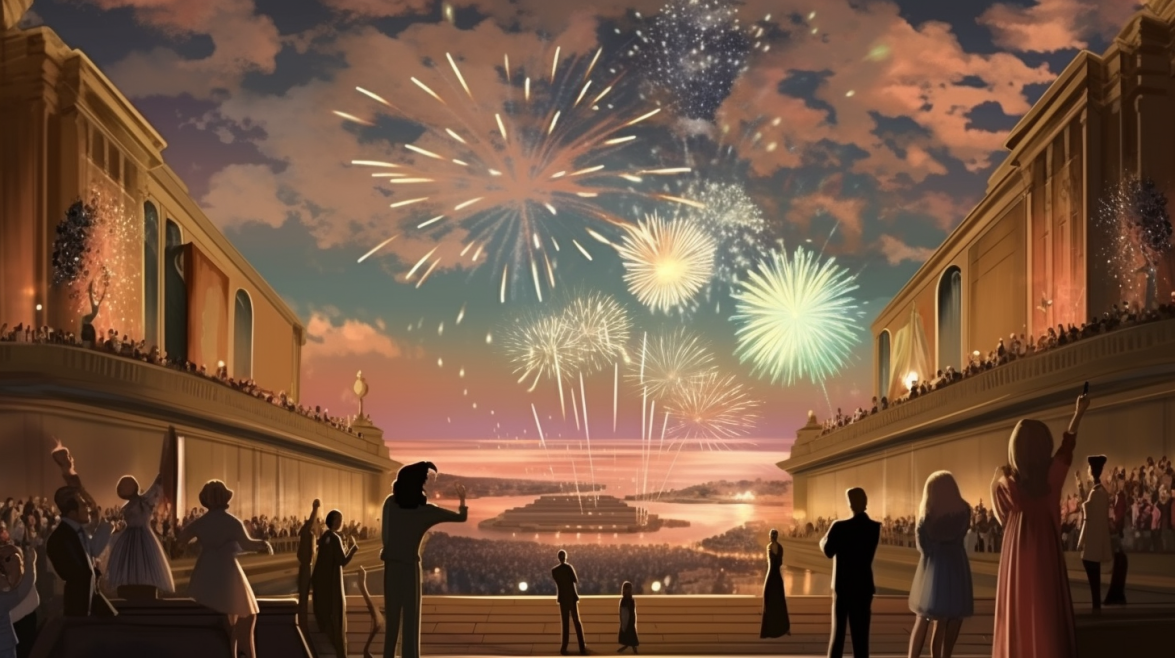The Team Flow Institute is dedicated to the reunification of all workers. Not just labor uniting together, but executives, management, and labor under the common cause of their company missions.
In service of understanding just how big a transformation of perspective that is, I wanted to dig into the history of the divisions these three silos have built as executives have pushed to “mechanize” workers, while workers have pushed to amplify their humanity and managers have had to work to pull the two sides back to the center so their divided house would not fall. Through all the automation evolutions that have happened over the industrial age, sometimes falling down to the cheapest, good enough, and sometimes rising to more regenerative and holistic solutions, why is now, of all times, with the introduction of the most revolutionary technology of all, AI, is the most crucial, to heal these divisions rather than finally tear them apart?
In the Beginning
In the beginning, there was work. And it was hard.
Back breaking labor that yielded small results. But then we realized something: some people are good at some things and other people are good at others, and if we divide our labor into parts, we get to concentrate on what we’re good at, while others do what they’re good at, and in the end, we all get more output for less input, and hopefully like what we do each day a little more.
And with that division between us from our division for work came the myopic fights for what we thought was right for all from the perspective of what was right for some.
Once Adam Smith popularized this into the dawn of industrialization, not only did specialization and organizational design become ingrained in the way we work, the growing levels of productivity from that division made every technological advancement (from iron to steel, from water to steam, from assembly to assembly line, from an assembly line of workers to an assembly line of robot assisted workers, from information to the information superhighway) were all applied from this lens: how do we divide the people to increase the work? And with every advancement, that culture of separation between those in charge, those doing the work, and those managing how the work was done grew larger and larger to the point where it was hard to find an organization that could see the forest of company mission through the trees of day to day responsibilities.
It only took one advancement in automation, as steam power pushed humans past the point of their own speeds, for the labor movement to form in England and just a few years later in America where the first, local, demonstration took place in NYC in 1882. When, that early September day, 10,000 laborers marched for better pay and working conditions. 16 years later, it became a national holiday.
An Industrial and Technological Revolution
By the second stage of industrialized automation, the assembly line, labor got a taste of a living wage with the very inventor of the assembly line, providing workers with a $5/day salary, not only was this enough to live on, it was enough to afford buying one of the very cars they made, creating a virtuous cycle that flipped supply meeting demand, to demand increasing supply.
By the third stage of automation, labor had to fight again for the value of their production to stay with their paychecks instead of executive compensation. Union’s grew stronger, and because of their wins, that same demand increasing supply rule applied again, but this time, to the entire middle class.
It took the age of hardware and software automation to turn the tide against labor. Politicians aligned with executives for union busting, privatization, and mergers that labor on their heels. This is also the time when we see company cultures change from life-long workers with pensions to multi-job, then multi-career, then majority freelance work where safety nets and company profits ran in opposite directions of each other.
#AI – Beyond the 4th Industrial Revolution
Enter stage left – artificial intelligence. After over a century of executives and labor building cultures in opposition to each other with management evolving more and more efficient ways to keep the peace between the two, the ultimate automation tool, equally able to affect white as well as blue collars, has forced these divisions of labor to hit a crossroads.
AI is already showing the potential it has to both help us reach new heights as well as strip bare everything that has previously made value. This technology may seem like a bag of mixed nuts where we just have to accept the bad with the good, but when it comes to the next wave of automation, the choice is actually in our hands. Not because we can choose to take the good alone, but because the fight this time, it isn’t executives vs. labor, it’s augmented labor vs automated labor and it’s up for executives to decide which side they want to join.
The Choice
To put it plainly. The industrial age is ending. And this fork in the road leads to either The Automated Age or The Augmented Age.
Some companies may choose to move towards an AI generated, automated future, where humans take a back seat to absolutely any task AI can take on and work in service of those efficiencies. This road shows huge, immediate gains. But what has also already been shown, is that AI, without humans in the loop, collapses in on itself. Or as Louis Rosenberg calls it, “generative inbreeding.” No matter which way executives choose, AI doesn’t take over the world tomorrow. However the incentivization structure will be in place to solve every problem moving forward with more AI, which will eventually lead to that collapse.
Or executives recognize there is some work that automation is great for and AI can enhance that work, but some work should forever be a human endeavor. And for that uniquely human work, where creativity, inventiveness, empathy, and so many other uniquely human traits benefit the end product, AI augments labor in service of how we work.
But for The Augmented Age to save us from The Automated Age, executives need to realize one important lesson: we were always on the same side. Division of Labor leads to divisions of labor because we only saw from our own perspectives. Laid bare by the pandemic, it was plain to see executives wanted to watch us work and labor wanted as much autonomy as possible. This fight for the return to office is the death knell of the industrial age. This is the squabble that shows just how little value is left in our division and how much value is waiting for us when executives, management, and labor recognize they’re all employees of the same companies, and more importantly, the same missions. Re-aligning around the same purpose, not oversight or autonomy, can ironically give us both, if we re-align around each other. Because when we do, a new team science has already proven that safe spaces, aligned personal goals, mutual commitment, high skill integration, open communication, and audacious team goals create an environment where AI doesn’t lead to collapse, but a new maximum moment for organizations: Team Flow.



